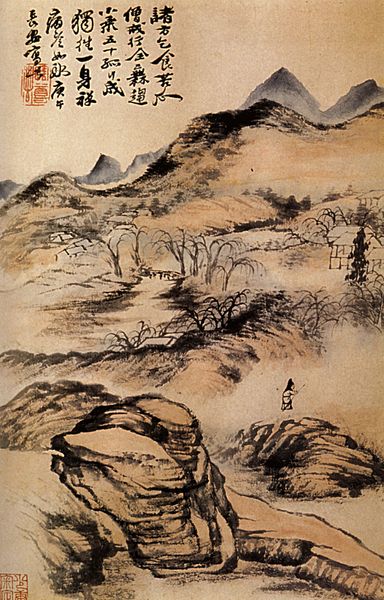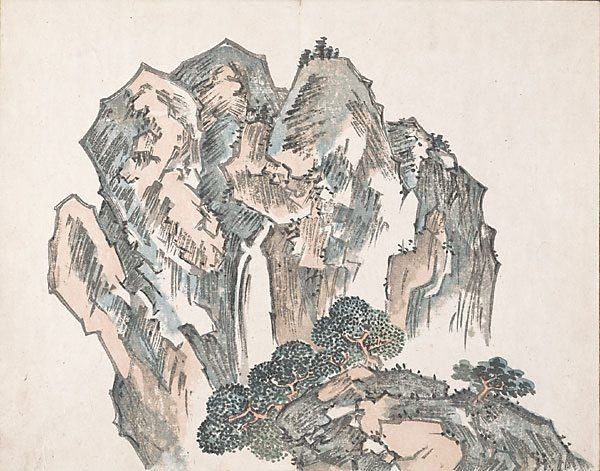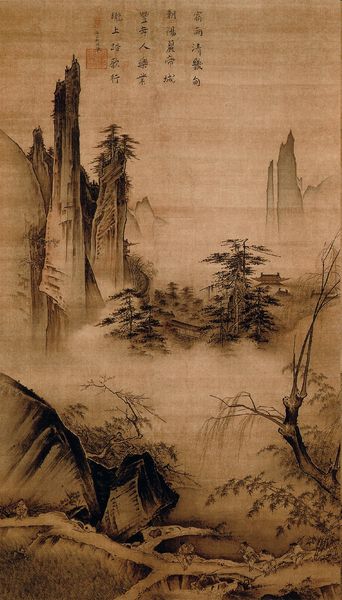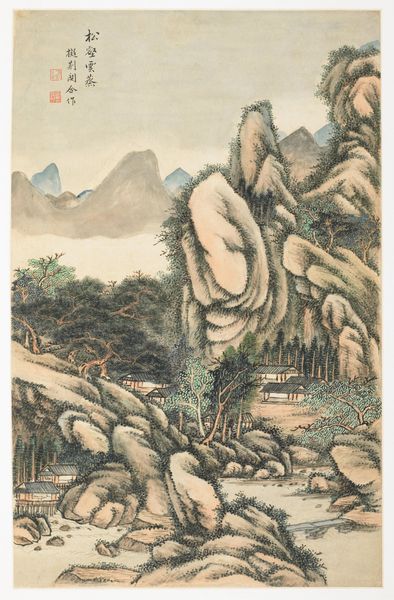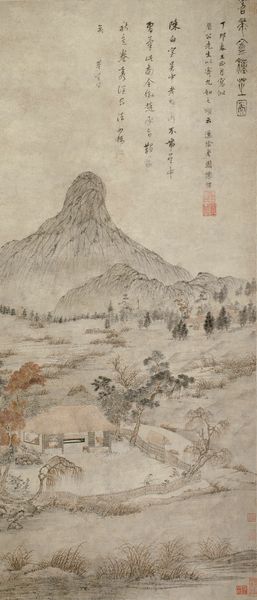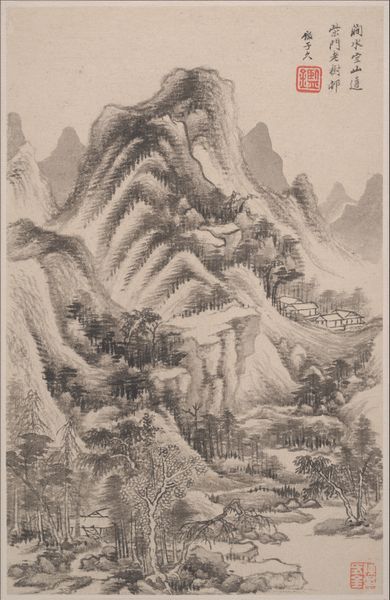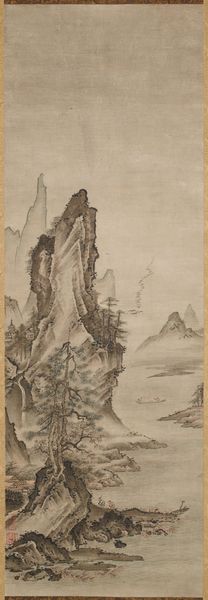
drawing, tempera, painting, paper, ink
#
drawing
#
tempera
#
painting
#
asian-art
#
landscape
#
paper
#
ink
#
coloured pencil
#
mountain
#
mixed media
Copyright: Public domain
Editor: Here we have Shitao's "The Source in the hollow of the Rock" created in 1707, using ink and tempera on paper. Looking at the painting, the sweeping brushstrokes and the placement of the small dwelling give it a quiet, almost lonely, feel. What aspects of materiality and production strike you most when you examine this work? Curator: The most fascinating thing to me is Shitao's deliberate manipulation of his materials. Note how the varying ink washes create the illusion of depth and texture, essentially conjuring a landscape out of graded, earthly matter. He doesn’t hide the evidence of the making; instead, the visible brushstrokes reveal the process itself – the labor of the artist. Do you see how the rock form dominates, dwarfing the human construction of the building? Editor: I do, it's as if nature and labor are contrasted here. How does this emphasis on materials and labor affect the traditional hierarchy in art, the division between, say, ‘high art’ and ‘craft’? Curator: Precisely! By focusing on the materials and the manual process, Shitao seems to question those distinctions. Landscape painting in China was often about conveying philosophical ideas of transcendence. Here, it seems he’s grounding that transcendence in the tangible world, almost industrial in his awareness. Editor: So, Shitao isn't just depicting a landscape; he's also revealing the means by which the image is created, the physical processes? Curator: Exactly. He is forcing us to think about art as a product of labor and materials, embedding social realities within his art. Editor: That completely reframes how I see landscape painting! I’ll definitely be paying more attention to brushstrokes from now on! Curator: As will I.
Comments
No comments
Be the first to comment and join the conversation on the ultimate creative platform.
